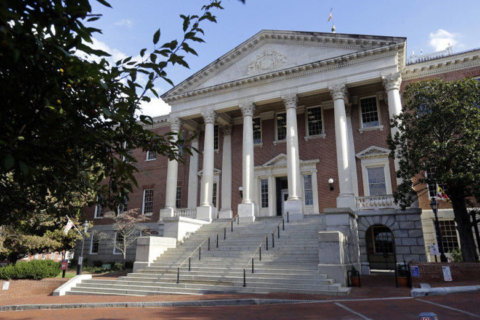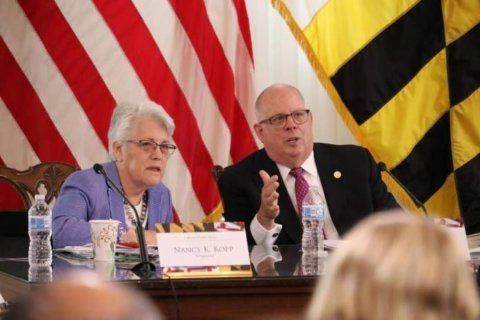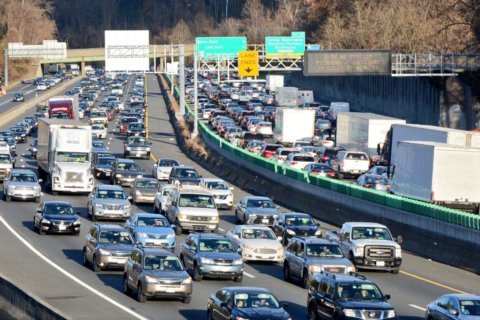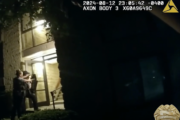On the first day of the legislative session in Maryland, Gov. Larry Hogan has a big win — one he says will benefit commuters across the region.
In a 2-1 vote, the state’s Board of Public Works voted to move forward with Hogan’s controversial plan to widen the Capital Beltway over the American Legion Bridge and part of Interstate 270 by adding toll lanes.
The board’s vote puts the project out to bid, even as critics say there’s a lot about the plan that’s still not known.
“This truly is a monumental and historic achievement, not just for Maryland, but for the entire capital region,” Hogan said during a public hearing ahead of the vote.
The board vote came after Hogan reached a deal with Comptroller Peter Franchot, who initially opposed the plan, over concerns about tolling.
“This is a very early stage in the process, but I think it’s a fair and balanced agreement that achieves our shared goals,” Franchot said.
As WTOP has previously reported, the deal limits the initial toll lanes to an extension of the 495 Express Lanes from Virginia over a rebuilt Legion Bridge up I-270 to I-370.
Other toll lane construction previously proposed by the Hogan administration around the rest of the Beltway through Montgomery and Prince George’s counties — or up I-270 through Frederick County to I-70 — would be deferred indefinitely.
Under the retooled plan, the first section to be delivered under Phase 1 of the project will be along I-495 from south of the George Washington Parkway to I-270, and along I-270 from I-495 to I-370. The remaining phases will be solicited at a later date, according to the Hogan administration.
Maryland will contract with private companies to build and operate the toll lanes.
Treasurer Nancy K. Kopp voted against the plan, citing the desire to learn more about how the cost of the project was assessed. Kopp said the administration recently answered her department’s questions, but they have not been able to fact-check their conclusions.
“It would be good if we could see the numbers that went into those conclusions and understand why, for instance, we have to go with a P3 (public-private partnership) instead of looking at alternative — in the end, ultimately less expensive — funding,” Kopp said.
Kopp also made a point to ask Maryland Department of Transportation representatives to explain what had been done so far in assessing the environmental impact of the first phase of the project.
Another critic of the plan, Janet Gallant with DontWiden270.org, is concerned not only about the impact to those homes and businesses that line the highway but also about the cost to taxpayers.
“One way or another, we all know we’re going to pay … for this deal through tolls,” Gallant said.








